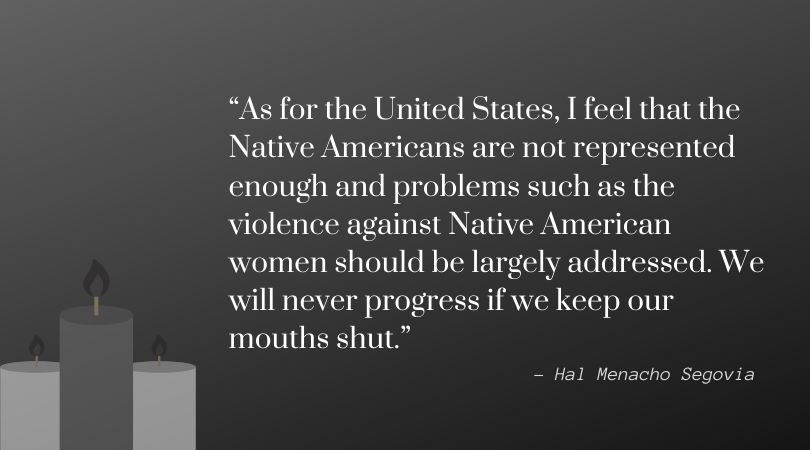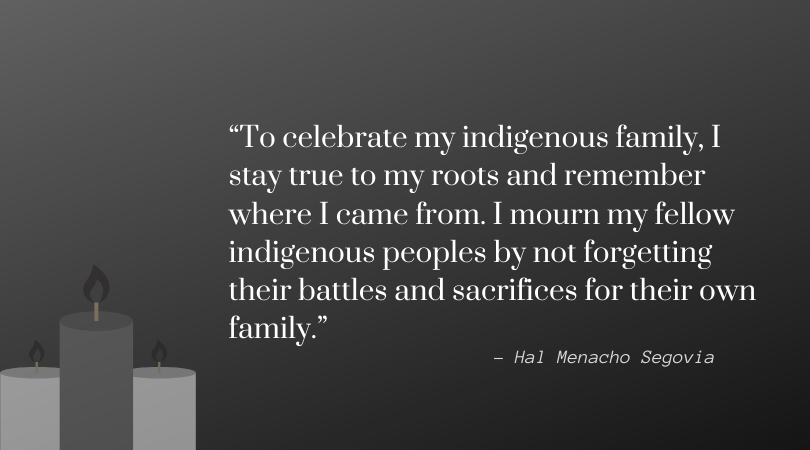The National Day of Mourning
Words by Jada Gordon
Graphics by Aspasia Celia Tsampas
“As for the United States, I feel that the Native Americans are not represented enough and problems such as the violence against Native American women should be largely addressed. We will never progress if we keep our mouths shut.”
For most Americans, Thanksgiving is a day to spend with family, give thanks, and eat great homemade food. However, for Native American and Indigenous Indians, the holiday is a painful reminder of the long history of colonization and murder of American Indians in America. Therefore, in 1970, to show reverence to those ancestors who suffered, National Day of Mourning was established on the same day as the American Thanksgiving holiday.
The National Day of Mourning is sponsored by the United American Indians of New England (UAINE). In 1998, the UAINE received permission from local authorities to march without a permit. This day of mourning is a reaffirmation of the representation that Native Indians have had to fight for consistently throughout American history. With the rise of activists on social media, the voices and messages have been amplified. Additionally, the voices of people with indigenous Hispanic roots are using their voices to show respect to their ancestors and the community that has been affected and continues to be affected by the colonization, and genocide, of indigenous people. The National Day of Mourning is an acknowledgment of the horrors of the past, fighting for the rights of the present, and future.
For City College of New York student Hal Menacho Segovia, his point of view of Thanksgiving is one that is shared amongst many, he states, “I do not trust the origins of Thanksgiving. History was collected by white men and displayed by white men.” History as we’ve known it has been told by white men. Thanksgiving is a prime example of such retellings of history. Hal, despite not having Native Indian American heritage, shares the plight of colonization that the American Indians have endured.

He is of Quechuan heritage, which can refer to any of the indigenous people of South America who speak the Quechua language, which originates from the indigenous people of Peru. Hal also has Mexican and Bolivian heritage. Southern American indigenous tribes are victims of the erasure that colonization has inflicted on indigenous people. This unfortunate history binds many indigenous people together to celebrate their heritage but also commiserate on the trauma and pain their peoples were forced to endure. Hal states, “In my country of Peru, my people face oppression and constant insults from the ‘white’ Hispanic ‘mestizo’ majority.” This is a constant narrative that follows communities of color including the Native Indian Americans.
Many American Indians and indigenous people find different ways to celebrate their heritage in the eye of oppression that continue to haunt these communities. Hal expresses his respect for his ancestors through his choice of clothing, he states, “I wear a chullo hat during the winter. It has been used by my people for thousands of years. I also wear ponchos, also the clothing of my people.” Simple acts of agency, such as wearing the clothing of one’s ancestors, brings people closer to their history and roots. This is imperative to people whose tribes and identities have been lost to colonization. For the National Day of Mourning, the gathering of Native American tribes to connect and celebrate their heritage is an ultimate act of agency, that the community had to fight for and reaches beyond.






